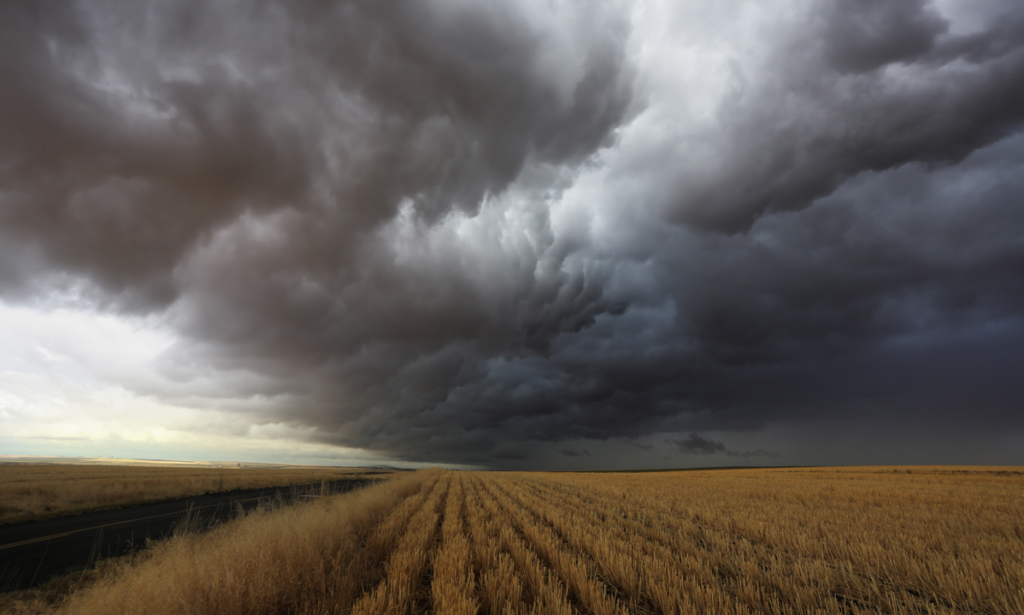As expected, on inauguration day, the Trump administration withdrew the United States from the Paris Agreement on climate change.[1] Prior to the withdrawal, at least one business leader, Exxon CEO Darren Woods, thought it would be a bad idea. He stated, “A second U.S. exit from the 2015 Paris climate agreement … would create uncertainty and could confuse global efforts to stop the worst effects of climate change.”[2] Woods, like many other business leaders, understands that it’s in his company’s best interests to address the negative impacts of climate change and to get others to support those efforts as well. Sara Hsu, a Clinical Associate Professor of Supply Chain Management at the University of Tennessee, explains, “Globally, extreme weather events are on the rise, posing significant challenges to supply chain managers. Executives have been left scrambling to address recent natural disasters … that have caused major disruptions to operations and logistics. Some of these events have upended supply chains by damaging industrial installations. … They’ve wiped out commodities in flood-damaged areas. … And they’ve shut down transportation routes. … To face these challenges, supply chain managers must ensure resilience in their supply chains and implement future-proof strategies. This requires leaders to invest in innovative solutions that mitigate climate change risks while protecting profitability and growth.”[3]
Growing Risks from Climate Change
Journalist Charlie King writes, “Climate risk is affecting businesses worldwide on a daily basis, making it a growing priority for many to incorporate resilience into their operations and strategy. According to the World Economic Forum, climate change and its effects are projected to cause between US$1.7tn and US$3.1tn in annual damages by 2050, impacting infrastructure, property, agriculture, and human health.”[4] King goes on to identify ten risks that underscore the importance of addressing sustainability issues. They are:
1. Climate change and extreme weather events. “The impacts of climate change can be seen through extreme weather events including flooding, droughts, heatwaves, wildfires, hurricanes and typhoons, cyclones, rising sea levels and coastal erosion.”
2. Regulatory compliance and governance issues. “As pressures for businesses to increase sustainability initiatives ramp up, so do compliance requirements. The ever-evolving regulations landscape and governance challenges pose challenges for businesses trying to keep up. Whilst greenwashing is an issue for consumer trust, greenhushing is an increasing trend in response to governance pressures.”
3. Supply chain disruptions. “The ever-changing climate is causing issues in the supply chain that are having an impact globally. Severe weather events like flooding, storms and extreme heat are causing disruptions that ripple down the supply chain, impacting everyone from the supplier to consumers. In response, many companies are incorporating climate risk management into supply chain strategies to build resilience against such events.”
4. Social and labor issues. “Extreme weather can lead to health and safety issues for workers and deteriorated working conditions, including inadequate housing, poor sanitation, and limited access to clean water. … As industries implement new technologies for sustainability, there is a need for retraining and support for workers transitioning between sectors — when this need isn’t met, it is often the workers that suffer.”
5. Biodiversity Loss. “World Environment Day 2024 put a global focus on land restoration, desertification and drought resilience to promote sustainability and environmental action under the theme Our Land, Our Future. Biodiversity loss impacts not only habitats and ecosystems but also the very foundations of life on earth.”
6. Water Scarcity. “Water scarcity directly impacts two key things — employee wellbeing and ecosystem disruption. This, in turn, can have severe consequences for communities, operations and supply chains that are felt around the world.”
7. Reputation and Brand Damage. “Consumer expectations on sustainability initiatives are continuing to rise. Deloitte’s 2024 Sustainability and Consumer Behavior report found that a quarter of consumers are prepared to pay more for sustainability. This includes paying more to protect biodiversity or for sustainable products and packaging, or for products or services of suppliers that respect human rights or commit to ethical working practices.”
8. Technological Risks. “The rise in dominance of AI and other new technologies being used to support sustainability comes hand in hand with the rise in cyberattacks, the broadening of the digital divide and more instances of technological obsolescence.”
9. Transition Risks. “As we continue to transition to a more sustainable economy, changes in consumer preferences, shifts in market dynamics, and the adoption of new business models all open up the opportunity for risk. Transition risks are considered climate risks because they encompass the financial, operational, and strategic challenges that arise as economies shift from a reliance on fossil fuels to more sustainable energy sources and practices.”
10. Community Relations and Stakeholder Engagement. “How a company interacts with its stakeholders — including local communities, customers, employees, investors, and regulators — can significantly impact its reputation, operational stability, and long-term viability in the face of climate change.”
Rising to the Challenge
Supply chain journalist Robert J. Bowman observes, “When it comes to assessing the many risks to supply chains, planners generally don’t place natural disasters at the top of the list. But with the growing number of extreme weather events affecting the movement of goods worldwide, that could change in the coming years. … Companies can’t afford to ignore the wave of weather events, many the result of climate change, that have occurred in recent years.”[5] He adds, “Companies seeking to manage weather risk have to adopt two distinct mindsets: short-term and long. In the case of the former, they must have on hand a detailed contingency plan for dealing with the crisis of the moment. Typically that consists of a ‘playbook’ that assigns roles to key managers in the event of an emergency, and designates temporary alternative sources of supply should access to major vendors be cut off. The problem with such plans is that they quickly become obsolete, as supply strategies evolve in line with changing markets and economies.”
One way to help with the long-term mindset is to conduct routine scenario planning. Scenario planning tools, like the Enterra Global Insights and Decision Superiority System™ (EGIDS™) — powered by the Enterra Autonomous Decision Science® platform, can help business leaders rapidly explore a multitude of options and scenarios. That means that plans can be adjusted quickly as the business (and environmental) landscape changes. Stephany Lapierre, founder and chief executive officer of Tealbook, asserts, “Extreme weather, though unpredictable on a case-by-case basis, is becoming a guarantee in the abstract. Leaders must take decisive steps to proactively mitigate the impacts of climate change.”[6] She suggests supply chain professionals should consider the following options:
● Leveraging risk analytics services. “Threat mapping, modeling and predictive analytics can help leaders proactively strategize around climate events. Advanced weather forecasting provides disaster awareness, enabling leaders to proactively identify alternative suppliers with more time to spare. Similarly, organizational data analytics can identify which supply chain hubs are most important to business operations, cluing leaders in on where to invest additional resources.”
● Monitoring supplier data management. “High-quality supplier data isn’t a luxury — it’s an organizational imperative. Technology solutions like supplier data platforms (SDPs), which use artificial intelligence to collect, validate and distribute supplier information, provide the most accurate and comprehensive supplier data foundation, with coverage across data lakes, existing applications, tools and systems. With an SDP, procurement teams can access data that enables alternative supplier identification in a crisis.”
● Employing IoT-enabled monitoring systems. “To prevent part destruction or spoilage, leaders can adopt internet of things solutions that ensure the integrity of their inventory. For example, using remote temperature monitoring, they can ensure that sensitive foodstuffs and other goods (such as medically necessary instruments and tests) remain safe during transport, even during a climate emergency.”
Lapierre concludes, “Climate change is intensifying, forcing operations to become more proactive. We must prioritize transparency, predictive risk analytics, robust business continuity planning, and advanced monitoring technologies to meet this challenge.”
Concluding Thoughts
It’s clear that the world is doing too little to prevent climate change from getting worse. Researchers from University College London (UCL) have concluded, “Global GDP loss from climate change will increase exponentially the warmer the planet gets when its cascading impact on global supply chains is factored in. … The study, published in Nature, is the first to chart ‘indirect economic losses’ from climate change on global supply chains that will affect regions that would have been less affected by projected warming temperatures. These previously unquantified disruptions in supply chains will further exacerbate projected economic losses due to climate change, bringing a projected net economic loss of between $3.75 trillion and $24.7 trillion in adjusted 2020 dollars by 2060, depending on how much carbon dioxide gets emitted.”[7] Senior author of the research paper, Professor Dabo Guan from UCL Bartlett School of Sustainable Construction, states, “These projected economic impacts are staggering. These losses get worse the more the planet warms, and when you factor in the effects on global supply chains it shows how everywhere is at economic risk.” Companies simply can’t afford to ignore the risks. Both mitigation and adaptation strategies are going to be required.
Footnotes
[1] Donald J. Trump, “Putting America First in International Environmental Agreements,” The White House, 20 January 2025.
[2] Collin Eaton and Benoît Morenne, “Exxon Says Trump Should Keep U.S. in Paris Climate Pact,” The Wall Street Journal, 12 November 2024.
[3] Sara Hsu, “Why global businesses must consider climate change risks to their supply chains,” Supply Chain Management Review, 27 September 2024.
[4] Charlie King, “Top 10: Climate Risks,” Sustainability Magazine, 19 June 2024.
[5] Robert J. Bowman, “Planning for Natural Disasters: A Growing Priority in Supply Chain Risk Management,” SupplyChainBrain, 18 March 2024.
[6] Stephany Lapierre, “How Leaders Can Navigate Climate-Related Supply Chain Disruptions,” SupplyChainBrain, 11 March 2024.
[7] University College London, “Supply chain disruptions will further exacerbate economic losses from climate change,” Science Daily, 13 March 2024.





